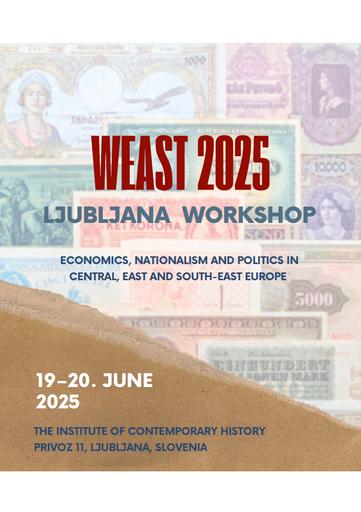/
Dogodki
/
Konference
HDI, GDP, composite welfare
Regional inequalities and development levels in interwar Yugoslavia – the Bićanić-Prica debate reconsidered


To delo avtorjev László Bíró, Gábor Demeter je ponujeno pod Creative Commons Priznanje avtorstva-Nekomercialno-Deljenje pod enakimi pogoji 4.0 Mednarodna
Datoteke (1)
Opis
The Bićanić–Prica debate was one of the politicised historical debates of Interwar Yugoslavia over the supposed unequal distribution of financial burdens and political profits. In their arguments the Croatians, unsatisfied with the political system, claimed that their contribution to the maintenance of the monocentric state (in financial terms too) was over-represented compared to their share from population, especially considering gains and advantages. Croatians also claimed that their contribution in this respect was also higher than the political core, Serbia’s share. The Serbs, using completely different indicators tried to falsify this statement ending in serious debates. However, neither of the quarrelling parties tried to compare state taxes and deprivations with income levels and economic performance, which would give a more accurate result. We do not know whether it was an intentional decision, because this method would have been unfavourable for both parties. In this essay, we give a criticism of their argumentation and analyse the contribution levels from a different angle. By reconstructing incomes (using GDP estimates) and burdens at banovina levels, we concluded that the burden measured to income had been much higher in Slovenia and Vojvodina than in Croatia or Serbia (or banovinas covering their territory). By reconstructing historical HDI and a composite development index at banovina-level – allowing a multidimensional approach compared to the economy-centric GDP – we also try to assess which parts profited more from the existence of the SHS Kingdom / Yugoslavia in the interwar period by calculating development and welfare rates and finally, we examine the changes in banovina-level inequalities between 1920s and 1930s.
Metapodatki (12)
- identifikatorhttps://hdl.handle.net/11686/71115
- naslov
- HDI, GDP, composite welfare
- Regional inequalities and development levels in interwar Yugoslavia – the Bićanić-Prica debate reconsidered
- avtor
- László Bíró
- Gábor Demeter
- soavtor
- Jelena Rafailović (mod.)
- predmet
- HDI
- GDP
- Jugoslavija
- opis
- The Bićanić–Prica debate was one of the politicised historical debates of Interwar Yugoslavia over the supposed unequal distribution of financial burdens and political profits. In their arguments the Croatians, unsatisfied with the political system, claimed that their contribution to the maintenance of the monocentric state (in financial terms too) was over-represented compared to their share from population, especially considering gains and advantages. Croatians also claimed that their contribution in this respect was also higher than the political core, Serbia’s share. The Serbs, using completely different indicators tried to falsify this statement ending in serious debates. However, neither of the quarrelling parties tried to compare state taxes and deprivations with income levels and economic performance, which would give a more accurate result. We do not know whether it was an intentional decision, because this method would have been unfavourable for both parties. In this essay, we give a criticism of their argumentation and analyse the contribution levels from a different angle. By reconstructing incomes (using GDP estimates) and burdens at banovina levels, we concluded that the burden measured to income had been much higher in Slovenia and Vojvodina than in Croatia or Serbia (or banovinas covering their territory). By reconstructing historical HDI and a composite development index at banovina-level – allowing a multidimensional approach compared to the economy-centric GDP – we also try to assess which parts profited more from the existence of the SHS Kingdom / Yugoslavia in the interwar period by calculating development and welfare rates and finally, we examine the changes in banovina-level inequalities between 1920s and 1930s.
- založnik
- Inštitut za novejšo zgodovino
- datum
- 20. 06. 2025
- tip
- video
- jezik
- Angleščina
- jeDelOd
- pravice
- licenca: ccByNcSa
